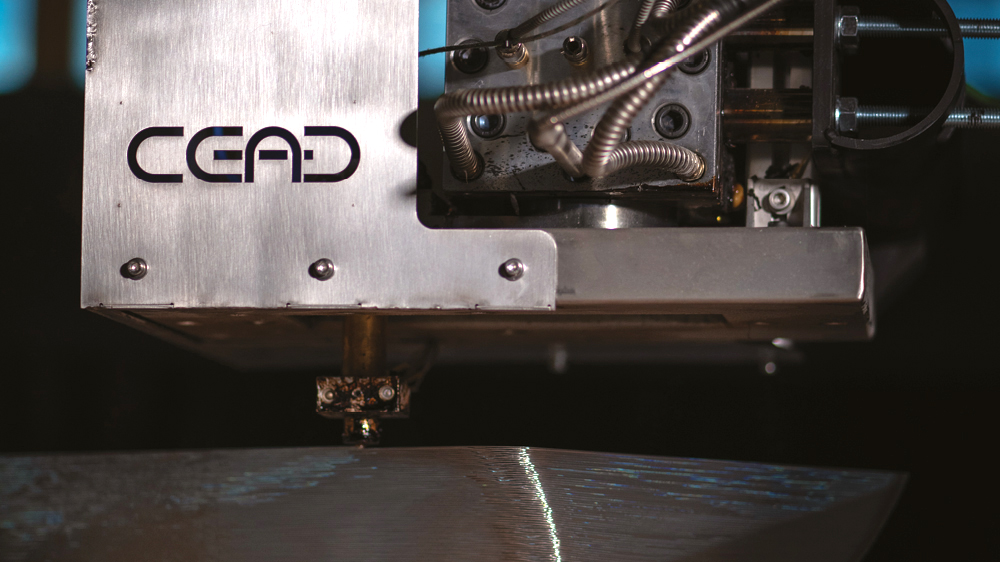CEAD and Belotti formed a strategic partnership combining expertise in additive and subtractive manufacturing to bring the new BEAD composites hybrid LFAM system to market, with support from Siemens, already a CEAD partner. The acquired know-how and experiences in both fields, combined with the innovative drive of both companies, is the strong basis of this new partnership. Siemens supports this partnership by equipping their new machines with the Sinumerik CNC automation system.
“This partnership is a great opportunity for the development of our companies both for technological growth and the growth of human capital. The young spirit of our companies and the passion for technology will be the ingredients that will allow us to get out of these complicated years and look to the future with enthusiasm and confidence,” explains Umberto Belotti, CEO at Belotti.
By itself, large-scale additive manufacturing cannot deliver the finish and tolerances subtractive manufacturing offers. On the other hand, subtractive manufacturing is accompanied by a lot of waste, which large-scale additive manufacturing is not. Combining these processes already gives the best of both worlds: making it possible to 3D print the near net shape of a part and afterward milling it to the required tolerances with a CNC milling machine.
CEAD and Belotti take the combination of these two processes one step further by developing a hybrid machine. With this machine, the overall business investment in new machinery will be lower. The hybrid machine requires less space and programming, and because the produced parts do not have to be moved between machines, handling time and work in process is reduced. Numerous configurations are possible, varying in build volume, output, spindles, the position of the heads and more.
Manufacturing on Demand
In 3dpbm‘s recent market report and forecast on Composites Additive Manufacturing 2020-2030, hybrid LFAM of composite materials is highlighted as one of the key revenue opportunities for the next decade, within an industry segment that is expected to generate $10B in yearly revenues by 2030 (including hardware, materials, services and applications-related sales).
All machines will be equipped with Siemens Sinumerik CNC automation systems, as the Siemens control has proven itself to be a strong system for both parties in their current machines. The Sinumerik CNC automation system is characterized as a highly productive automation solution across all production domains. Depending on the chosen configuration, its CNC performance allows up to 93 axes in 30 machining channels to be controlled in the NCU link. Machine concepts with fewer axes benefit from the performance of the Sinumerik since it offers the highest degree of machining precision with the shortest machining times. Based on the system openness of Sinumerik, the operation can be supplemented and adapted, which makes it a perfect fit for the new hybrid machines of CEAD and Belotti.
“The main success factor for industrial additive manufacturing is a seamlessly integrated end-to-end value chain. At our Additive Manufacturing Experience Center (AMEC) in Erlangen, Germany, we demonstrate end-to-end automation and digitization solutions together with our partners. In 2019, we included CEAD into the AMEC, showcasing an end-to-end solution for large-scale composite AM to many visitors, partners, and customers. One of them has been Belotti. So, it is great to see that the AMEC was instrumental in establishing this new partnership, enriching a great AM ecosystem,” said Dr. Karsten Heuser, Vice President Additive Manufacturing at Siemens Digital Industries.
“This is the start of a great partnership. We will start our focus on the maritime and aerospace sector, producing molds, tooling, or even end parts, but this is only the beginning. We see many applications to which this solution can make a sustainable and time-effective change,” added Lucas Janssen, CEO at CEAD. Fiber-reinforced thermoplastic materials will be used in the process, ranging from commodity materials to high-temperature materials with glass or carbon fibers.
* This article is reprinted from 3D Printing Media Network. If you are involved in infringement, please contact us to delete it.
Author: Victor Anusci



Leave A Comment